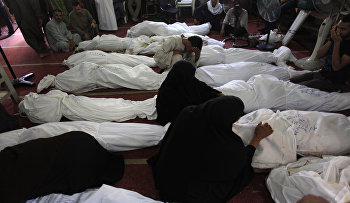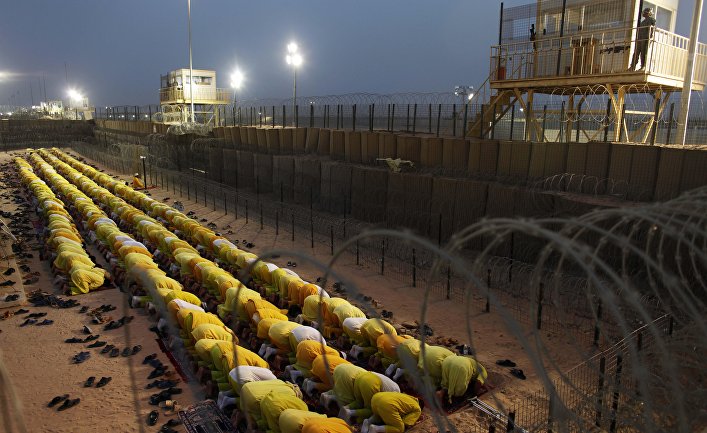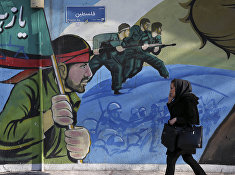What is ISIL fighting for?
The Islamic State has used armed attacks to take control of an area of land that straddles the borders of Iraq and Syria, and then announced this area to be a new country. Since then all news related to ISIL has been widely broadcast in Japan. In January 2015 the news of the killings of military officer Haruna Yukawa and journalist Kenji Goto – both being held prisoner by ISIL – shocked Japan.
The world community began forming a coalition to defeat ISIL – an organization which has committed appalling acts of violence, and has only grown in bravado as time goes on. Side by side with the coalition that includes the USA, Great Britain, France, Canada and Australia, Russia has been launching its own independent air strikes on Syria.
Can we therefore say that the basis of the conflict around ISIL is a struggle between radical Islamists and western nations – especially with the United States? It's certainly true that ISIL believes the citizens of western nations to be its enemies. Yet this is a very simplistic view of the situation at first glance – it can't be characterized simply as 'Islamic extremists Versus the West.' What are ISIL's primary motives? To answer this question, we need to look at the backstory. How and why did the Islamic State appear in Iraq?
How and why did the Islamic State appear in Iraq?
The underlying reasons for the appearance of the Islamic State (aka ISIL) lie in the fact that the Iraq War which broke out in 2003, ended unsuccessfully. Even so, the primary reason can be found much earlier – in the era when the Ottoman Empire controlled the Islamic world. In the nineteenth century, the Ottoman Empire ruled Turkey, the Balkan peninsula, Egypt, and the Arabian peninsula. The ruling dynasty within the Ottoman Empire were Turks. Under their jurisdiction came European Christians, Arabs, and Kurds. Had they put one religion ahead of another, the whole thing might have crumbled – and so they ruled on the principles of anti-clericalism.
The early decades of the twentieth century were marked by the First World War. The Ottoman Empire fought against Great Britain, France and the Russian Empire as an ally of Germany. The coalition power took the opportunity to bring the Ottoman Empire into chaos – and did so by promoting demands for independence among the Ottoman Empire's Arab minorities.

At the peak of the fighting in WWI, Britain and France concluded a secret alliance. They formed a pact to divide the Arab regions of the Ottoman Empire between themselves, once the Ottomans had been defeated. Britain had already gained control of Egypt, and so Britain and France divided the remaining Arabic peoples however it best suited them to do so. France picked off Syria and Lebanon for itself. Britain chose Jordan and Iraq. Europe's Jews were exiled to Palestine. The Arabs never knew of the existence of this plan.
The pact was known as the Sykes-Picot Agreement. Britain's interests lay in securing the route to India, its most valuable overseas colony. Britain had a thriving trade business with its Indian colony, and needed to be certain of a safe route for its goods — against the event that protests might disrupt deliveries. If the Arabian territories were shrewdly divided, then a land route to India could begin from the Mediterranean, by way of Jordan, by rail through Iraq, and then across the Persian Gulf to India.
The route, drawn up by Britain and France, forms the present-day border of Syria and Iraq. This is why today's border is a draftsman's straight line. Britain and France pursued a policy of self-interest, which cheerfully ignored local religious issues and national characteristics. The result was that Iraq – a country which came into being as a result of these demarcation processes – had numerous differing ethnic groups and allegiances. There were the Shiites in the south-east, Sunnis in the west, and Kurds in the north. Although the Kurds may have been fellow Sunnis, ethnicity brought them into conflict with their Arabic brethren, and were effectively an Iranian minority.
Iraq was an entirely artificially-created nation. Peoples with completely different ethnicities and beliefs were suddenly told that they had become Iraqis. Yet of course, so very many people with conflicting backgrounds were unlikely to live peaceably in one single country for long.
Iranian general Ali Jafari calls for the abolition of the border with Iraq, Lebanon, and Syria (ar) https://t.co/za1nRNu5lF
— Jonathan Schanzer (@JSchanzer) December 11, 2015
After this came the Iran-Iraq war, the Persian Gulf war, the Iraq War… and so on and so forth. Trouble simply escalated in Iraq, and trouble is the perfect breeding-ground for ISIL – for whom Iraq became a birthplace. It is no exaggeration to say that these problems came about precisely because the Europeans blatantly ignored the local situation when they drew-up their borders in the region. ISIL does not recognize the borders which the Sykes-Picot Agreement drew up. The nuances of the ethnic backstory outlined above account for a great deal of ISIL's rapid spread.
Why has ISIL spread into Syria?
As we can quickly tell from the name of the organization itself (ISIL – 'the Islamic State of Iraq & Levant') ISIL has built Syria (Levant's) into its own name. Syria is yet another artificially-formed state, created by Britain and France. The majority of the Syrian population are Sunni, yet there remains a substantial unaligned minority population of Alawites.

The Alawites are a separate religious group. They may have Shiite leanings, but they remain separate from them, The Mediterranean shores of Syria were once contested in battle by European medieval crusaders, and there is a considerable influence of Christianity in the region – the Alawites have no hatred of Christianity. This situation was exploited by France. When France took Syria under its control after the end of the First World War, the Alawites became their allies – and this is why they received a privileged status. To put down the Sunnis, the French provided military training and equipment to the Alawites.
Even when Syria eventually shook off French imperial control and became an independent country, the first-among-equals status of the Alawite minority remained – along with their access to military power. If fair elections had ever been held in Syria, then the Alawites would have lost their military superiority – and to cling onto it, the Alawites have governed Syria as a fiefdom, using the apparatus of a totalitarian state and the methods of a military junta. The Assad regime emerged to head this Alawite power-cluster – the minority triumphed over the majority.
Bashar Assad studied medicine, in Great Britain. It was expected that he would become and remain a 'pro-westerner'. Nevertheless in 2011, the unexpected Arab Spring swept through Northern Africa and the Middle East. The winds of change caused major upheaval. Arab Spring was a force for democratic change, against authoritarian governments. The first wave of this pro-democracy movement was seen in Tunisia. From there it moved through to Egypt, and then on to Libya and Yemen. Eventually it came, too, to Syria.
Many say that the Arab Spring was actually an Anglo-American project. During the Cold War era, the Assad family enjoyed comfortable collaboration with the USSR – as did Saddam Hussein. Unlike Saddam, Bashar Assad clung onto power with the end of the Cold War – when he began similarly collaborating with Russian president Vladimir Putin.
The Arab Spring as a historical irony
The USA and Great Britain certainly don't find Assad's closeness to Putin to be their cup of tea. They began to provoke the peoples who found themselves sidelined under Assad's totalitarian leadership, with the idea of ousting this pro-Russian leader. After all, the regimes in Egypt and Iraq had already been regime-changed. Later on Gaddafi met a similar fate. The Middle East had one last bulwark of authoritarian leadership – Bashar Assad. From 2011 onwards the democratic movement began taking a hold in Syria – the country fell into chaos. This kick-started Sunni rebellion, since they felt entirely sidelined by Assad's Alawite-based government. The Sunnis conspired to remove the Assads from power.

The Syrian and Iraqi Sunnis are one single people, sharing one faith. The only thing that divided them was the artificial line drawn up by the Sykes-Picot Agreement. This meant that following the Iraq War, the Iraqi Sunnis who had come off worst against the Iraqi Shiite government crossed the Syrian border, and joined causes with the anti-government factions in Syria.
It can well be said that Syria, which is undergoing a fierce civil war, is a country without a leadership. Assad only controls the capital itself, and the areas immediately around it. The borders are completely porous. ISIL and other terrorist extremists can wander in and out of Syria as they please. This has led to a uniting of ISIL — which penetrated into Syria from Iraq – with the Sunni Syrians who have risen up against Assad's government.
To achieve its aims – which are primarily to create a truly functioning Islamic State – ISIL has therefore hunkered down in the border regions along the Syrian-Iraqi frontier.








